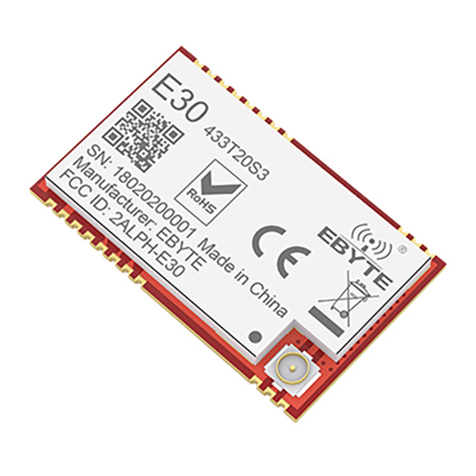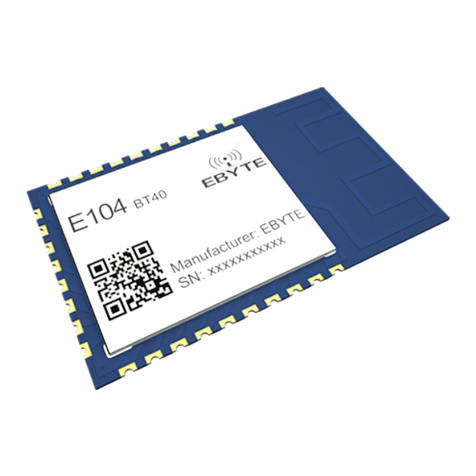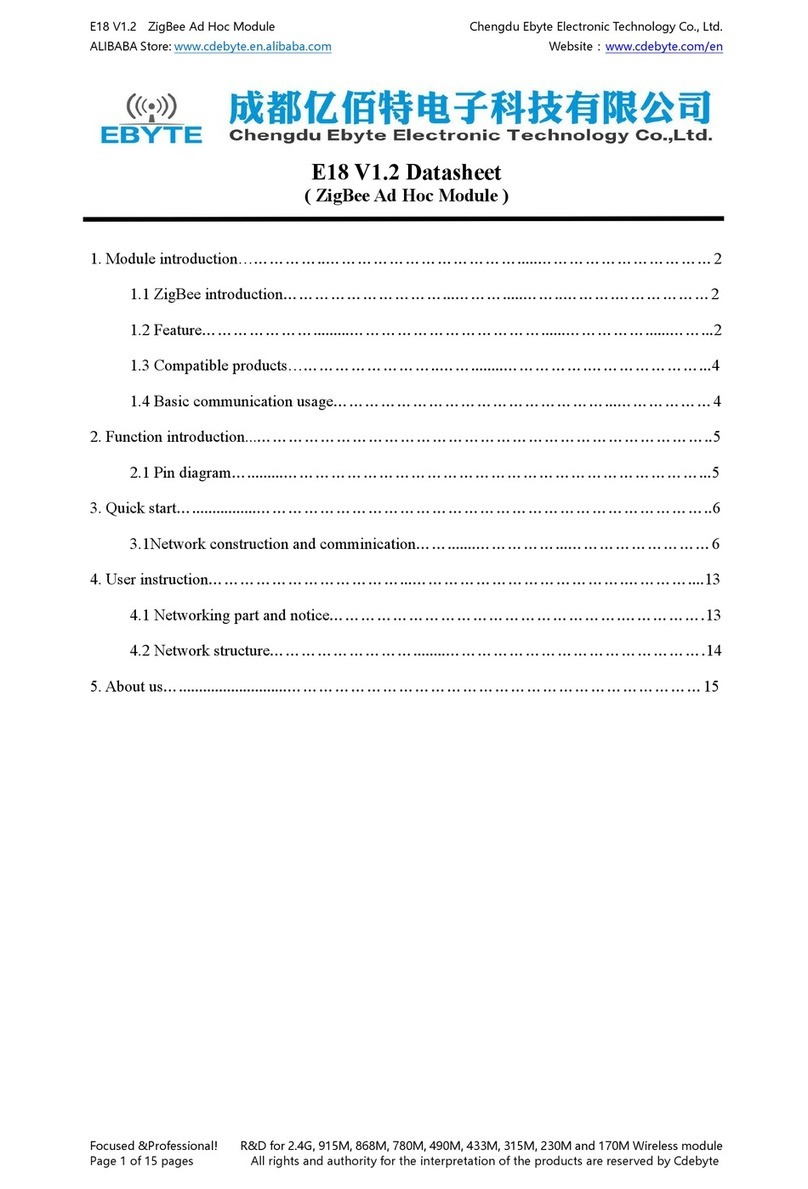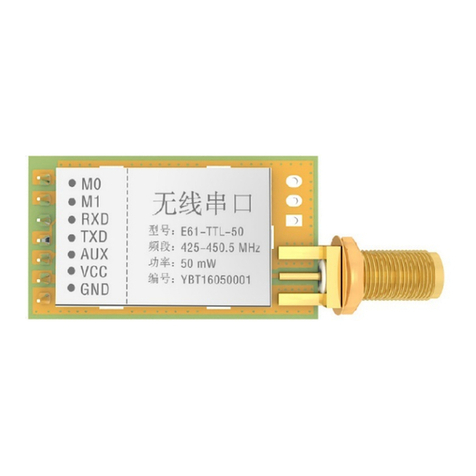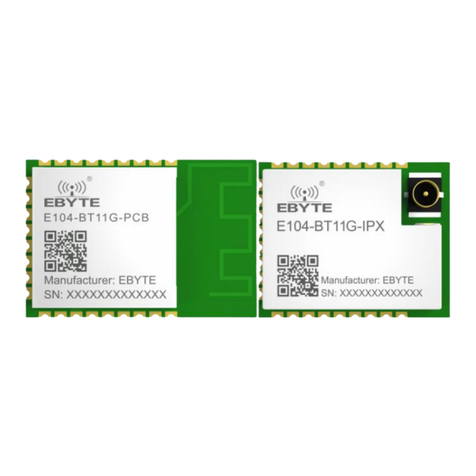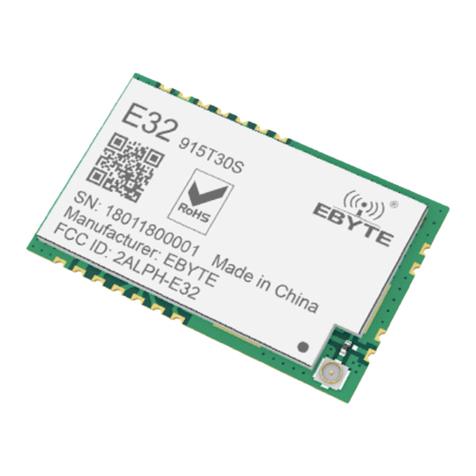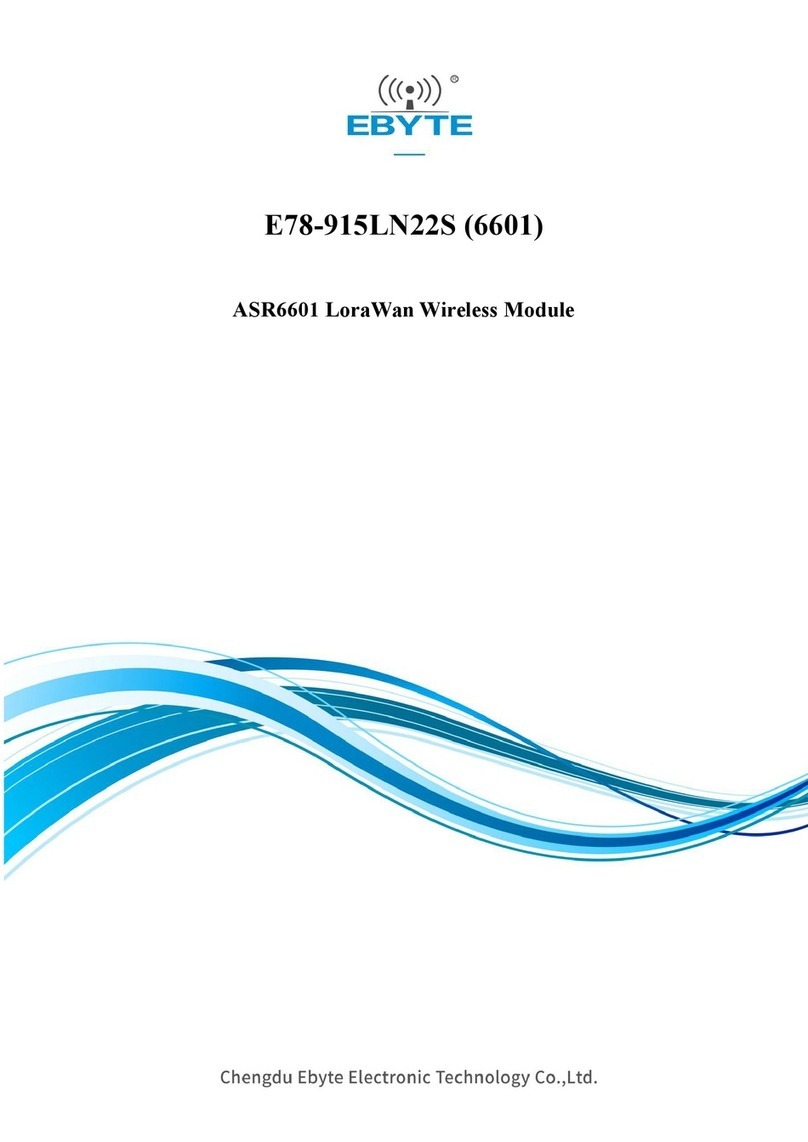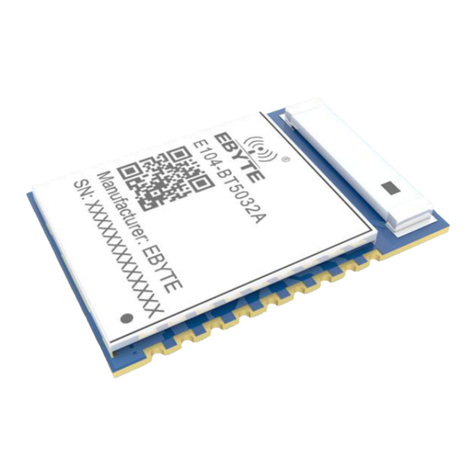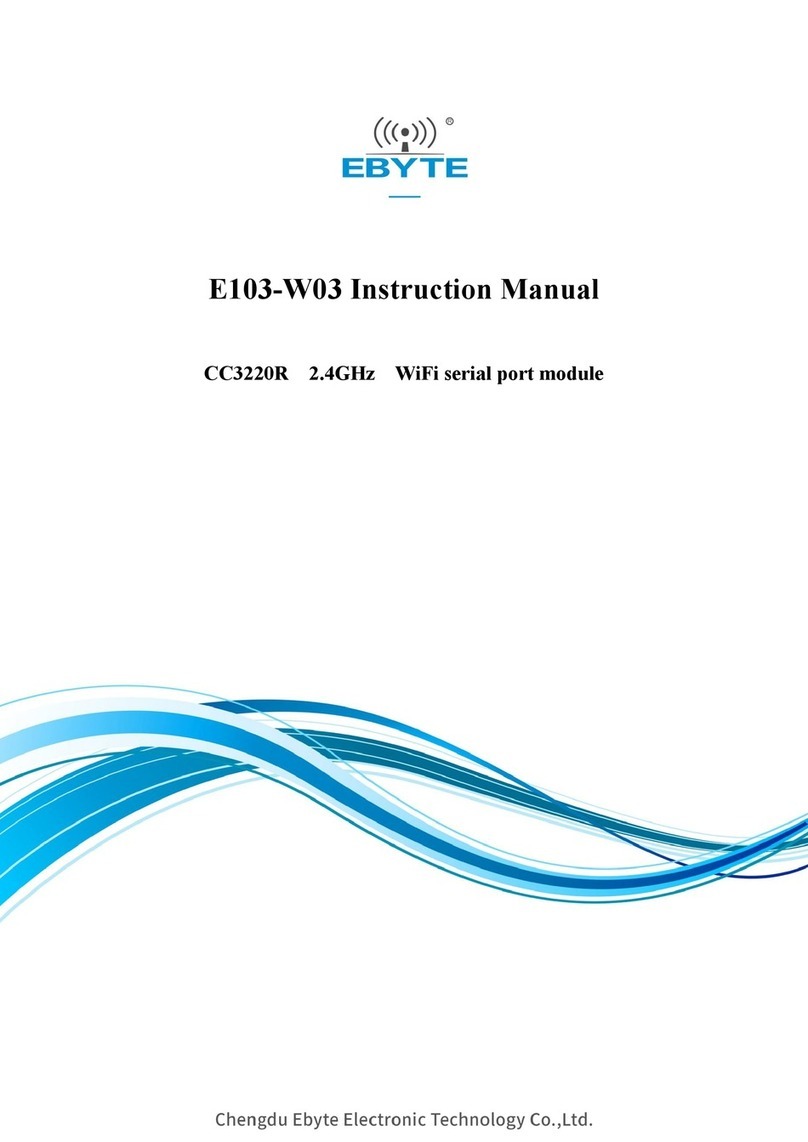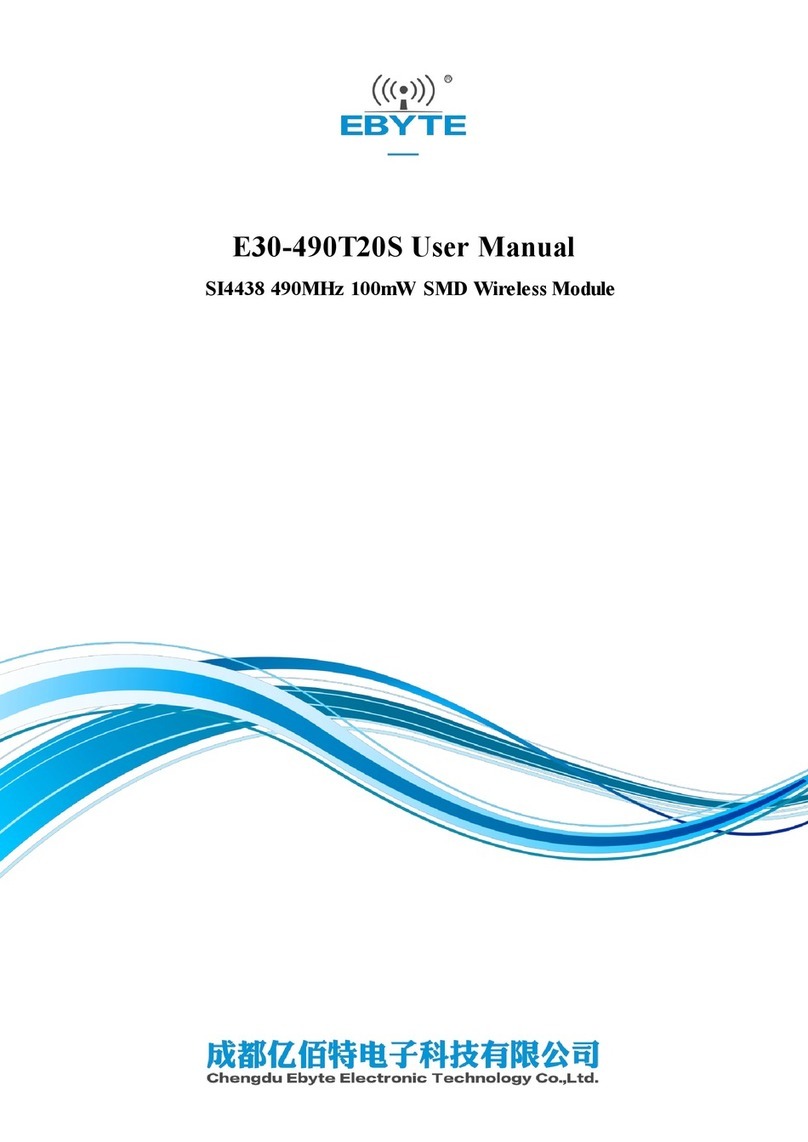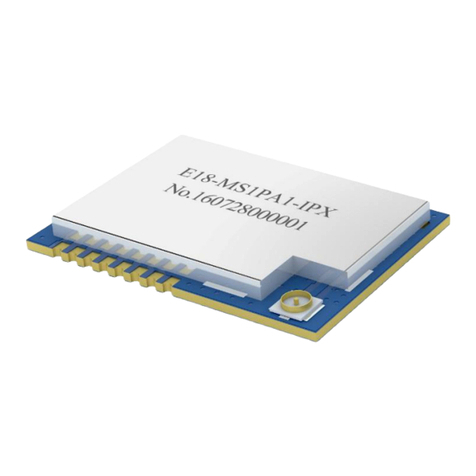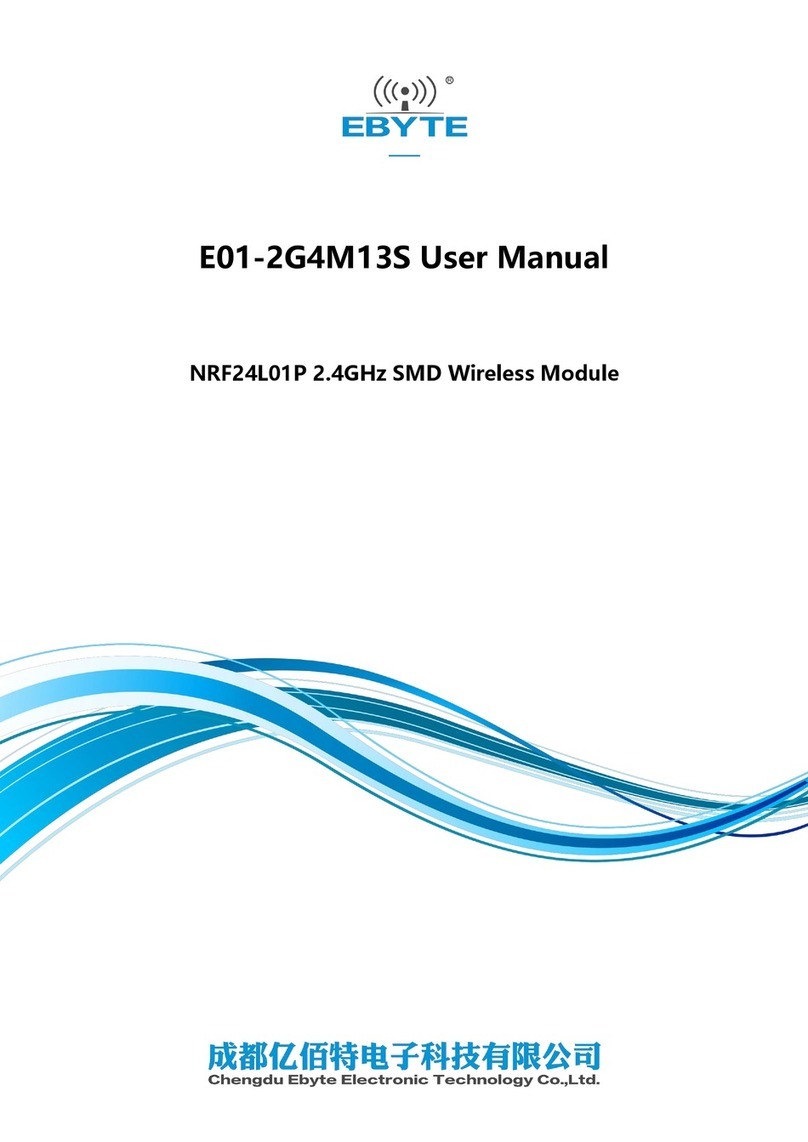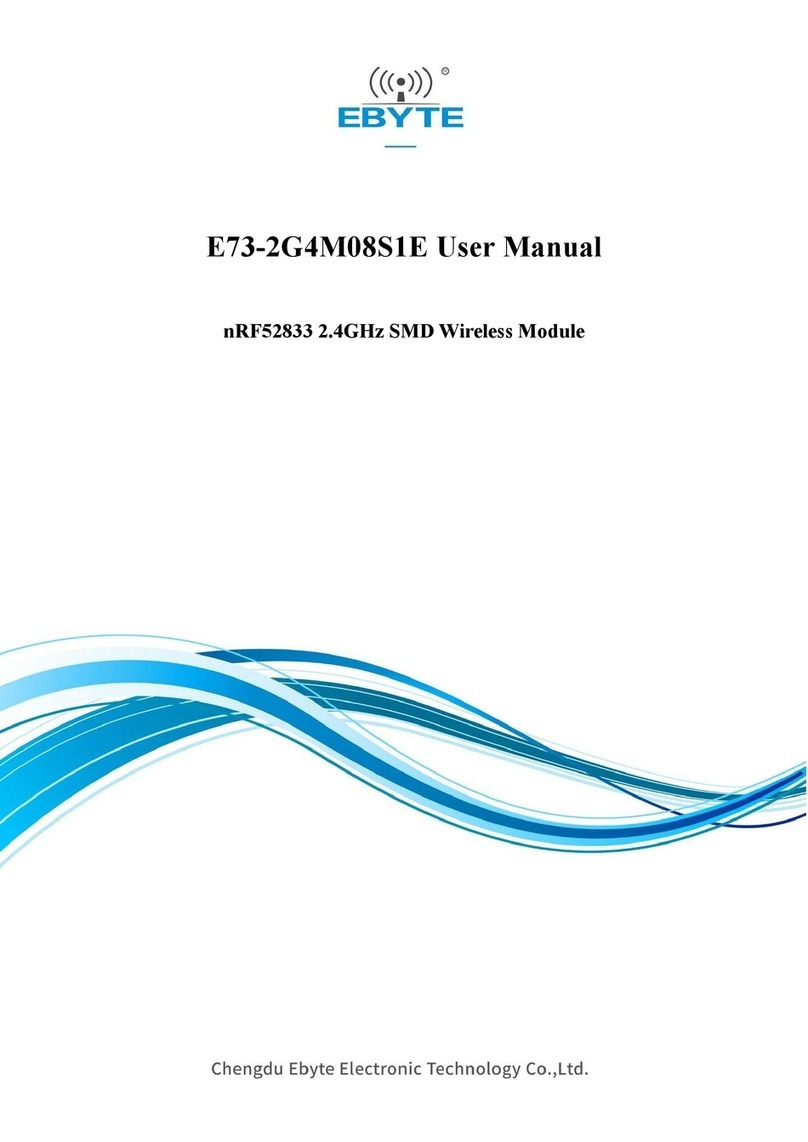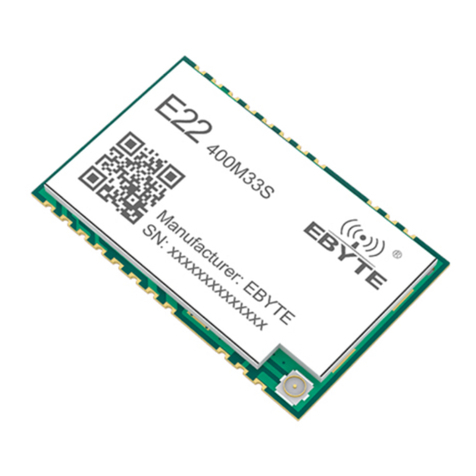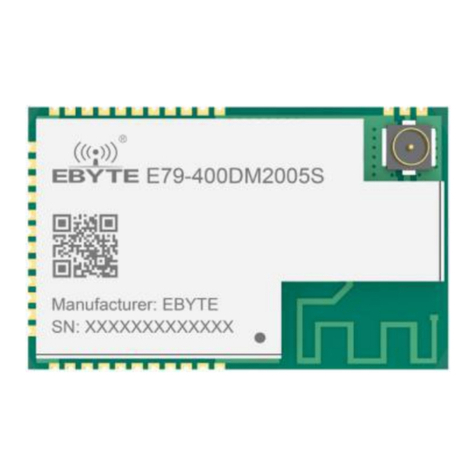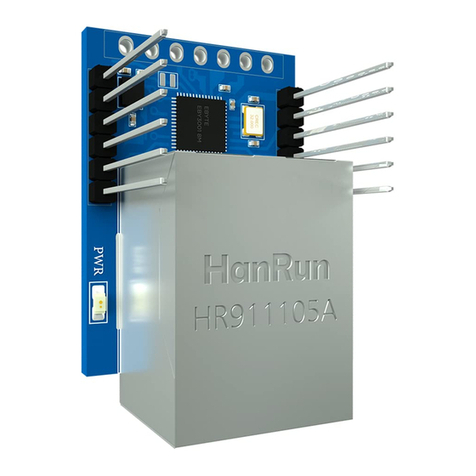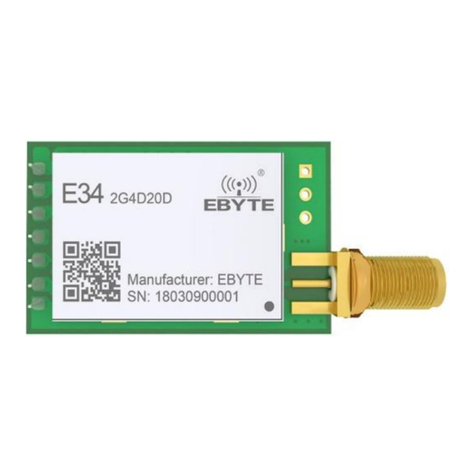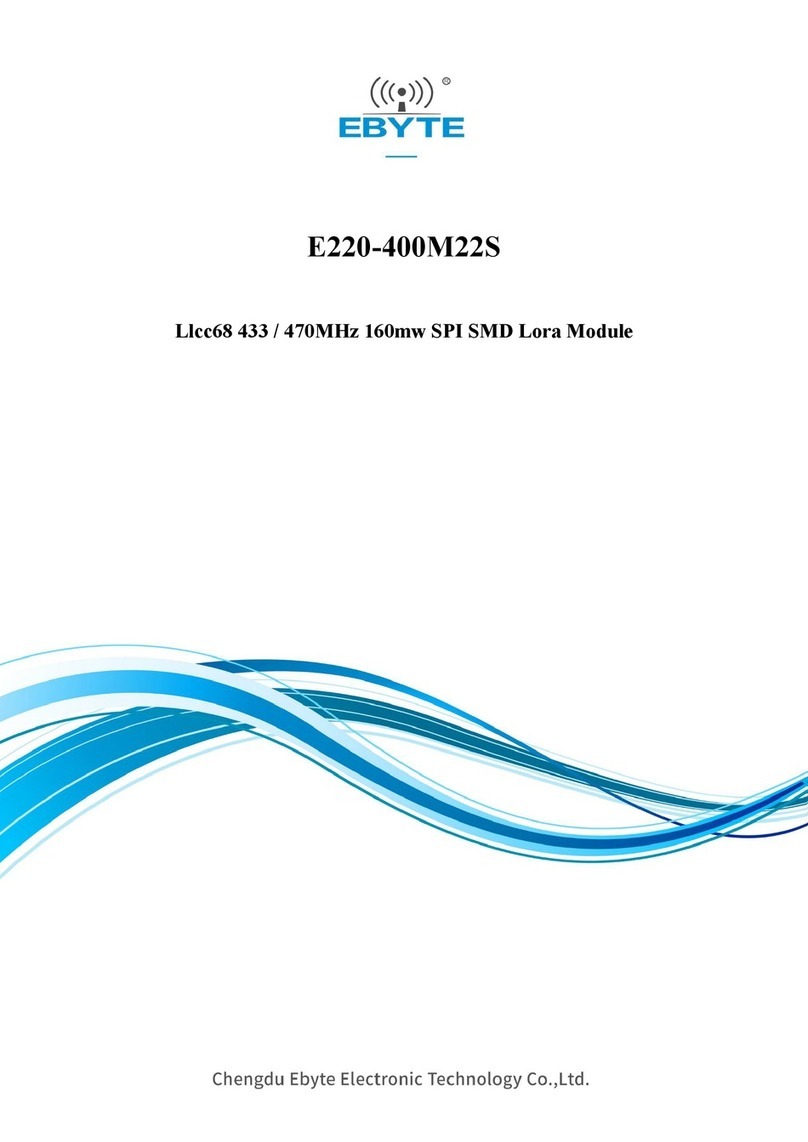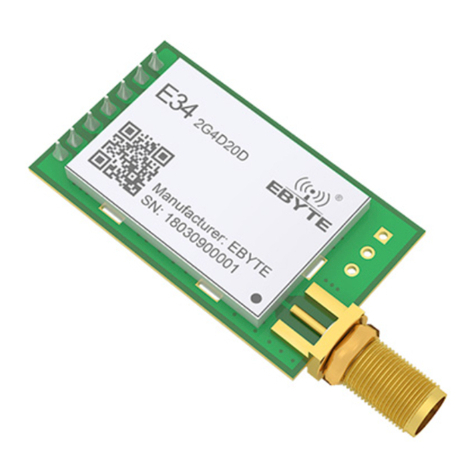
Chengdu Ebyte Electronic Technology Co,;Ltd E32-400T20S User Manual
Copyright ©2012–2019,Chengdu Ebyte Electronic Technology Co,;Ltd 1
CONTENTS
1. OVERVIEW..................................................................................................................................... 3
1.1 INTRODUCTION.............................................................................................................................................................. 3
1.2 FEATURES.......................................................................................................................................................................3
2.SPECIFICATION AND PARAMETER......................................................................................................................................4
2.1 LIMIT PARAMETER......................................................................................................................................................... 4
2.2 OPERATING PARAMETER................................................................................................................................................ 4
3 SIZE AND PIN DEFINITION......................................................................................................... 5
4. CONNECT TO MCU.......................................................................................................................6
5 FUNCTION DESCRIPTION...........................................................................................................7
5.1 FIXED TRANSMISSION....................................................................................................................................................7
5.2 BROADCASTING TRANSMISSION.................................................................................................................................... 7
5.3 BROADCASTING ADDRESS............................................................................................................................................. 7
5.4 MONITOR ADDRESS....................................................................................................................................................... 8
5.5 RESET............................................................................................................................................................................ 8
5.6 AUX DESCRIPTION........................................................................................................................................................ 8
5.6.1 Indication of UART output.....................................................................................................................................8
5.6.2 Indication of wireless transmitting........................................................................................................................ 8
5.6.3 Configuration procedure of module.......................................................................................................................9
5.6.4 Notes for AUX........................................................................................................................................................ 9
6 OPERATING MODE..................................................................................................................... 10
6.1 MODE SWITCH............................................................................................................................................................. 10
6.2 NORMAL MODE (MODE 0)............................................................................................................................................11
6.3 WAKE-UP MODE (MODE 1)...........................................................................................................................................11
6.4 POWER-SAVING MODE (MODE 2)..................................................................................................................................11
6.5 SLEEP MODE (MODE 3)................................................................................................................................................ 12
7 COMMAND FORMAT.................................................................................................................. 12
7.1 DEFAULT PARAMETERS................................................................................................................................................ 12
7.2 READING OPERATING PARAMETERS............................................................................................................................. 13
7.3 READING VERSION NUMBER........................................................................................................................................13
7.4 RESET COMMAND........................................................................................................................................................ 13
7.5 PARAMETER SETTING COMMAND.................................................................................................................................13
8. HARDWARE DESIGN................................................................................................................. 15
9 FAQ...................................................................................................................................................16
9.1 COMMUNICATION RANGE IS TOO SHORT......................................................................................................................16
9.2 MODULE IS EASY TO DAMAGE.....................................................................................................................................16
9.3 BER(BIT ERROR RATE)IS HIGH................................................................................................................................17
10 PRODUCTION GUIDANCE...............................................................................................................................................17
10.1 REFLOW SOLDERING TEMPERATURE......................................................................................................................... 17
